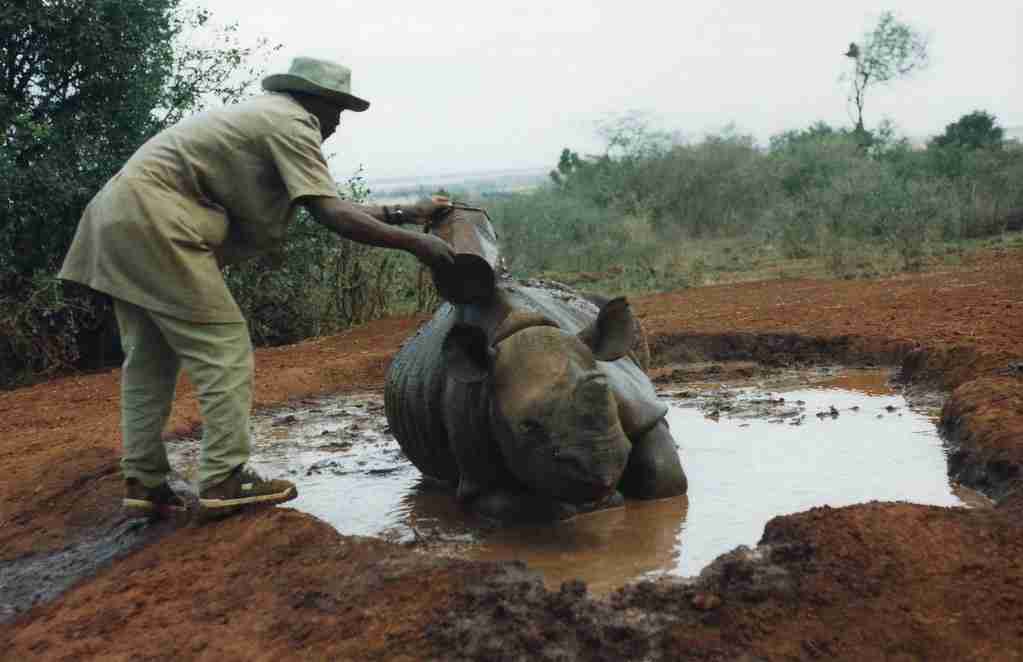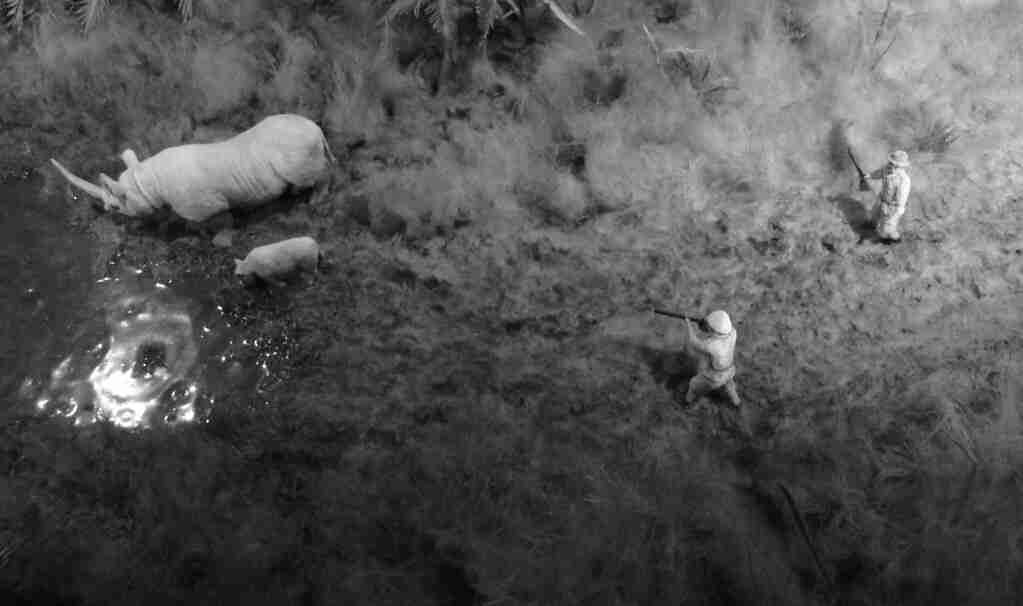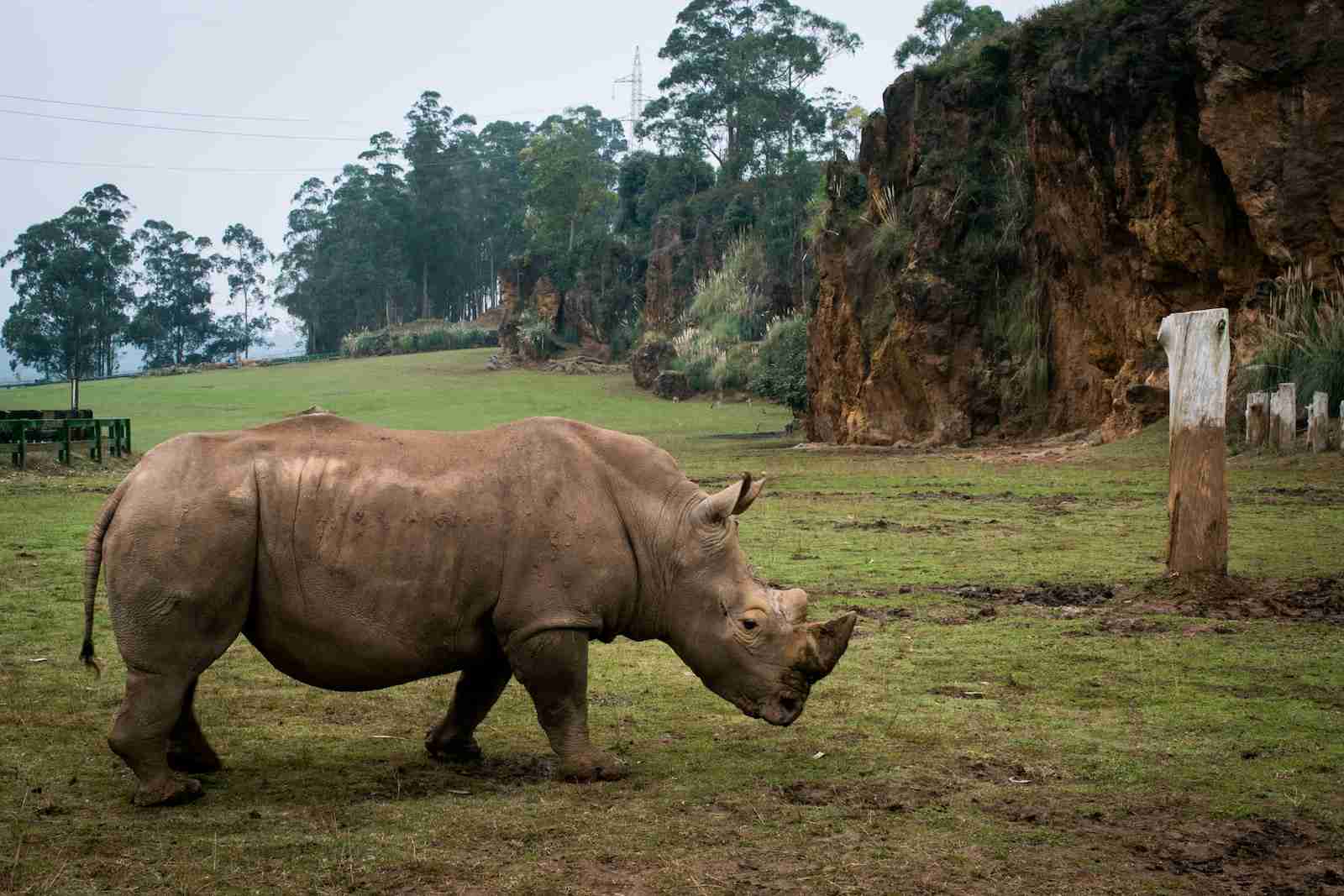12 Interesting Facts About Rhinos | African Armored Giant
1. The name Rhino comes from a Greek word meaning nose-horned.
The name ‘Rhinoceros’ originates from Ancient Greek, where ‘rhino’ means ‘nose’ and ‘ceros’ translates to ‘horn’, aptly describing this animal with a horn on its nose.
This term has been used since the 14th century. Similarly, ‘Unicornis’ in Latin combines ‘uni’ (one) and ‘cornis’ (horn), referring to a creature with a single horn.
2. A Rhino’s skin can get as thick as 5 cm.
A Rhino’s skin, remarkably thick at 1.5 to 5 centimeters, is made of crisscrossed collagen layers, earning them the name ‘Pachyderm’, from the Greek ‘pachys’ for ‘thick’ and ‘derma’ for ‘skin’.
This thick skin is a shared trait with elephants, highlighting their similarity in this unique physical characteristic.
3. The first Rhinoceros to roam the planet was the Woolly Rhino.
The Woolly Rhinoceros, a unique species of Coelodonta, first emerged in China during the Middle Pleistocene, around 570,000 years ago. Europe’s oldest remains date back to about 450,000 years.
This species is categorized into two subgroups, praecursor from the middle Pleistocene and antiquitatis from the late Pleistocene, based on their evolutionary timeline. Today, the Sumatran rhino is Woolly’s closest living relative.
4. Rhinos often communicate with one another through their poop.
Rhinos communicate using dung, leaving unique scent ‘messages’ in their piles. These scents vary among young, adult, and male rhinos, helping them identify each other.
They also use dung to mark territories, with each rhino’s distinct smell acting as a boundary. Producing up to 50 pounds daily, they create 20 to 30 piles to signal other rhinos to keep their distance.
5. Prehistoric humans depicted Rhinos in the Chauvet Cave Paintings of France.
The Chauvet-Pont-d’Arc cave in France, discovered in 1994, is one of the oldest known sites for prehistoric cave paintings. Inside, a 400-meter network of galleries features rock art, including the ‘Panel of the Fighting Rhinos and Horses.’
This panel, dating back to around 30,000 BCE, showcases a dramatic scene of two rhinos facing each other, surrounded by other animal images.
6. Rhinos’ skin is vulnerable to sunburn, which is one of Interesting Facts About Rhinos.

Despite their thick, 2-inch skin with layered collagen, rhinos are prone to sunburn and insect bites. In the wild, often seen on safaris, they roll in mud pools for protection.
Living in hot, sunny climates, their skin isn’t fully adapted to such conditions. Mud baths act as a shield, guarding their skin against the sun’s rays and bothersome insects.
7. In Asia, Rhino horns are utilized for medicinal purposes.
In Asia, rhino horns are used in traditional medicine to treat various ailments like fever, rheumatism, and gout. Ground into powder, they’re believed to cure snakebites, hallucinations, and even typhoid, but not as an aphrodisiac.
In Yemen, they’re fashioned into dagger handles. Historically, even Greek mythology credited them with water purification abilities.
8. Rhinos have excellent smell and hearing abilities but weak eyesight.
Rhinos compensate for their weak eyesight, which struggles to spot motionless objects at 30 meters, with their strong sense of smell and hearing.
They often have difficulty seeing other animals less than a hundred feet away on open plains. Their keen olfactory and auditory senses play a crucial role in their perception of the environment and navigation.
9. Rhinos are hunted for their horn.

Rhinos are poached for their horns, made of complex keratin with amino acids and minerals. High demand in Asia, especially for traditional medicine and as a wealth symbol, drives this poaching.
In Vietnam, a survey by TRAFFIC found rhino horn is bought more for social status than medicinal use, highlighting its role in affirming one’s social standing.
10. Despite their large size and weight, Rhinos are surprisingly fast and agile.
Despite being bulky and huge, Rhinos can charge at speeds of 30 to 40 mph in the wild, much faster than the fastest human who can run about 15 mph.
Black rhinos, in particular, can reach 30 mph and are adept at maneuvering quickly, dodging obstacles like trees and branches in dense environments.
11. Most wild Rhino calves never meet their fathers.
In the wild, Rhino calves rarely encounter their fathers. Post-mating, adult rhinos part ways, with the mother solely nurturing the calf for several years.
These young rhinos may mingle with other females and their offspring, forming small groups. However, the father rhino, absent from this social circle, plays no role in the upbringing or social life of his calf.
12. Black, Javan, and Sumatran Rhinos are all critically endangered species.
Once widespread across Europe, Asia, and Africa, rhinos have drastically declined from 500,000 in the early 20th century to about 27,000 today.
Black, Javan, and Sumatran rhinos are critically endangered, with Javan rhinos now found only in one Indonesian park. Despite conservation efforts, poaching and habitat loss continue to threaten their survival, especially outside protected areas.
FAQs
Rhinos are critically endangered, with fewer than 30,000 remaining in the wild. Between 2008 and 2021, about 11,000 were poached in Africa, driven by Asian demand for their horns, used in traditional medicine and as status symbols.
Rhinos, primarily herbivores, graze on grass, fruits, and leaves in the wild. White rhinos, known as eating machines, consume up to 120 pounds of grass daily, spending half their day feeding and the rest resting or wallowing in mud.
There are five rhino species: White, Black, Javan, Sumatran, and Indian. Three, the Black, Javan, and Sumatran, are critically endangered. Sadly, the western black rhino and northern white rhinos have recently become extinct in the wild, leaving about 27,427 rhinos in natural habitats.
To combat rhino poaching, strategies include breaking consumer demand, fitting rhinos with tracking devices, deploying anti-poaching units, dehorning, and educational campaigns. Avoid buying rhino horn products and support conservation by adopting a rhino through organizations like WWF-US and WWF-UK.
Rhinos first appeared in North America around 50 million years ago, with species like Floridaceras whitei common until 5 million years ago. The woolly rhinoceros emerged in China 1 million years ago, reaching Europe 600,000 years ago.







